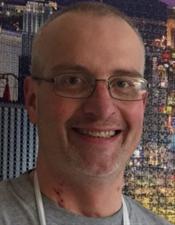UR Medicine Provides 3 Heart Transplants in 5 Days

UR Medicine’s Advanced Heart Failure team recently performed three heart transplant surgeries in a span of just five days at Strong Memorial Hospital, providing the Gift of Life for three men from across Upstate New York.
Cardiac Surgery Chief Sunil Prasad, M.D., and transplant surgeons Igor Gosev M.D., and Bryan Barrus, M.D., performed the six-hour, life-saving procedures in late July.
“It was coincidental in terms of timing and it’s not easy to pull off that many transplants so quickly. It takes incredible support from the team and throughout the hospital to make it happen,” said Leway Chen, M.D., M.P.H., medical director of the heart transplant team. “It was a busy five days, but we are ready 24/7 to respond when a generous donor is a match for any of our patients.”

It’s quite a feat for the hospital, which is Upstate New York’s only heart transplant service and averages 14 heart transplants each calendar year. The team was supported by a large number of surgical team members, infectious disease specialists, anesthesiologists, psychiatrists, pathologists, cardiologists, pharmacists, nurse practitioners/physician assistants, social workers, dieticians and nurses, all who are essential to the ongoing success of the program.
Currently there are 25 people on the waiting list for a new heart. The wait time for a new heart can vary dramatically depending upon their blood type, height and weight, and the region of the nation that they live.
New York has a severe shortage of organ donors in its registry and the number of people needing organs far exceeds those available. Only about 29 percent of eligible people have registered to be an organ donor in this state, which is lower than the national average of 52 percent. In the Finger Lakes region, 38 percent of eligible adults are enrolled in the registry.

Sam Lucca, 63, was the first of the three to receive his new heart and said, “I’m feeling really great today.” He suffered a devastating heart attack in May 2016 and a ventricular assist device was implanted to support his failing heart. His heart function worsened over the past year and he was placed on the transplant list earlier this year. Lucca credits his care team, led by transplant cardiologist Sabu Thomas, M.D., for “keeping me in shape to withstand the operation and be able to come out well.”
He and his wife, Kim, are optimistic about his upcoming return home to Williamsville, near Buffalo, and spending time with their two daughters. He looks forward to rebuilding his strength and returning to work at MLP Plumbing & Mechanical.
Livonia’s Thomas Mancuso’s transplant surgery followed a busy year focused on his heart health. He suffered a heart attack last September and his heart never recovered. Heart failure was rapidly progressing and cardiologist Hima Vidula, M.D.. M.S., urged him to wait for a new heart at Strong Memorial.

Just two weeks later, on July 28, word came that he was a match and his recovery is going smoothly. He was able to get out of bed and start walking the next day, which was a surprise for him and his care team.
“I can’t say enough about the care I received and how grateful I am to the donor,” said Mancuso, a 60-year-old Buffalo native who worked in service and sales for car dealerships. He looks forward to spending time with his partner, Ronda, and visiting his elderly mother in Buffalo.
Richard Stevens’ story is dramatically different from the others. He was hospitalized 465 days waiting for the match. The 6-foot, 5-inch man has type O blood. Unfortunately, very tall patients with this particular blood type often have the longest wait time.
It was difficult to be so far from many family members in Newark Valley, Tioga County, and having to adjust to living in a hospital. Stevens, 50, built a support network of caregivers and other patients on the 7-3400 Unit at Strong Memorial, and coped with boredom by doing jig-saw puzzles, and organizing card nights, football parties and an election night gathering. He also worked with hospital chaplains to create a support group for patients waiting for hearts.
When Advanced Heart Failure Program caregivers approached him to share the good news that a heart was available, Stevens was obviously elated. For so long he prayed for the strength to survive until he could get a new one. His cardiologist, Eugene Storozynsky, M.D., Ph.D., is optimistic for his continued recovery and restoration of quality of life.
Recovery from a heart transplant takes months and recipients are closely monitored by the heart transplant team, which also includes transplant cardiologist Jeffrey Alexis, M.D., for years.
“Three transplant in less than a week was very tiring; however, also a time to be proud to provide a second chance for each patient,” said Prasad, who performed one of the transplantation surgeries.
Yet it wasn’t as complex as performing two transplants in a single day, which UR Medicine Heart and Vascular’s heart transplant team achieved on Feb. 28, 2013. And only half as challenging as what happened at Tufts University last year, when doctors performed four heart transplants in 24 hours.
Organ transplantation surgery is not possible without the generosity of donors. The number of people who need organ transplants far exceeds the number of organs donated each year. There are nearly 10,000 people in New York who need an organ transplant, according to the Finger Lakes Donor Recovery Network, the organ procurement organization affiliated with the University of Rochester Medical Center, in partnership with other Upstate New York hospitals. About 450 people are on Strong Memorial Hospital heart, liver, kidney or pancreas transplant program waiting lists.
You can join the state’s organ donor registry online at passlifeon.org or by going to the Department of Health, Department of Motor Vehicles, or the Board of Elections when you register to vote.


